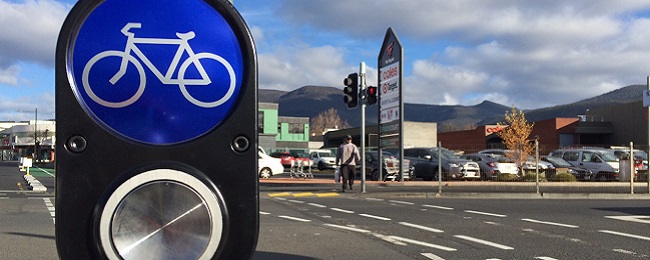Tackling Tasmania’s car addiction is the first step towards moving people towards active transport options according to our Bike Futures presenter and transport planner, Knowles Tivendale.
Director of Movement and Place consulting, Knowles pointed out some of the reasons why it’s so easy to drive in Tasmania. At the same time, noting there are a few crunch points approaching in Hobart that can help people choose other options.
Hobart currently has the cheapest annual car cost of any Australian capital city and the number of cars has increased 7% over the past decade, from 63.2 per 100 people in 2006 up to 67.4 in 2016.
Hobart has the highest proportion of journeys to work by car of all capital cities at 83%. But between 2014 and 2016 the rate of congestion at key city intersections during evening peak hour has also increased.
When the cost of parking exceeds the fringe benefit tax threshold of $8.66 people start to question the worth of car travel. In Hobart, all-day parking ranges from $10 up to $17.
People ordinarily try other transport options when they get fed up with the unreliability of car travel.
Of all the capital cities, Hobart ranks fourth for bicycle journeys to work. We are just ahead of Sydney and Adelaide on 2016 numbers, although both cities have been investing heavily in separated cycling infrastructure to increase rider numbers.
Separated cycling facilities that target 8–80 year olds, commuters and are within a moderate distance of destinations can play a role in helping people to avoid driving, or not to drive the entire distance.
What such facilities need is protection through intersections, physical separation that seems impenetrable and priority and dedicated right of way at all hours. Whether cycleways should be single lane or bi-directional will depend on lcoal conditions.
One way of making room for cycleways is to re-organise priority and space allocation on streets to favour active transport.
Knowles made the point that there are main streets in Hobart where on-street parking is under-utilised. Any car parked for more than 4 hours is being “stored” rather than parked, and the street is not necessarily the best place for that storage to take place.
Research into converting car parking space to bicycle parking in Lygon Street in Melbourne found that bicycle riders spend less than drivers, $16.20 versus $27, but six bicycles could fit into the space of one car park, which is $97.20 versus $27.
This is backed up by US research from Seattle which found that on a street where 12 parking spaces were replaced with a cycleway, sales increased by 400%. Although in another street where a car lane and three parking spaces were replaced with two bicycle lanes there was no effect on sales.
In Montreal in Canada 300 parking spaces were replaced by a protected cycleway but an education campaign successfully explained to the community that those parking spaces were only 3% of the district’s total available parking. The benefit was a protected bicycle corridor between the city centre and university.
While more separated cycleways would help people to choose cycling, improving the facilities we currently have would be a start. This could include better crossings across intersections for people riding the Intercity Cycleway, better connections of the existing paths, e.g. McVilly Drive, and priority at signalled intersections for riders.


